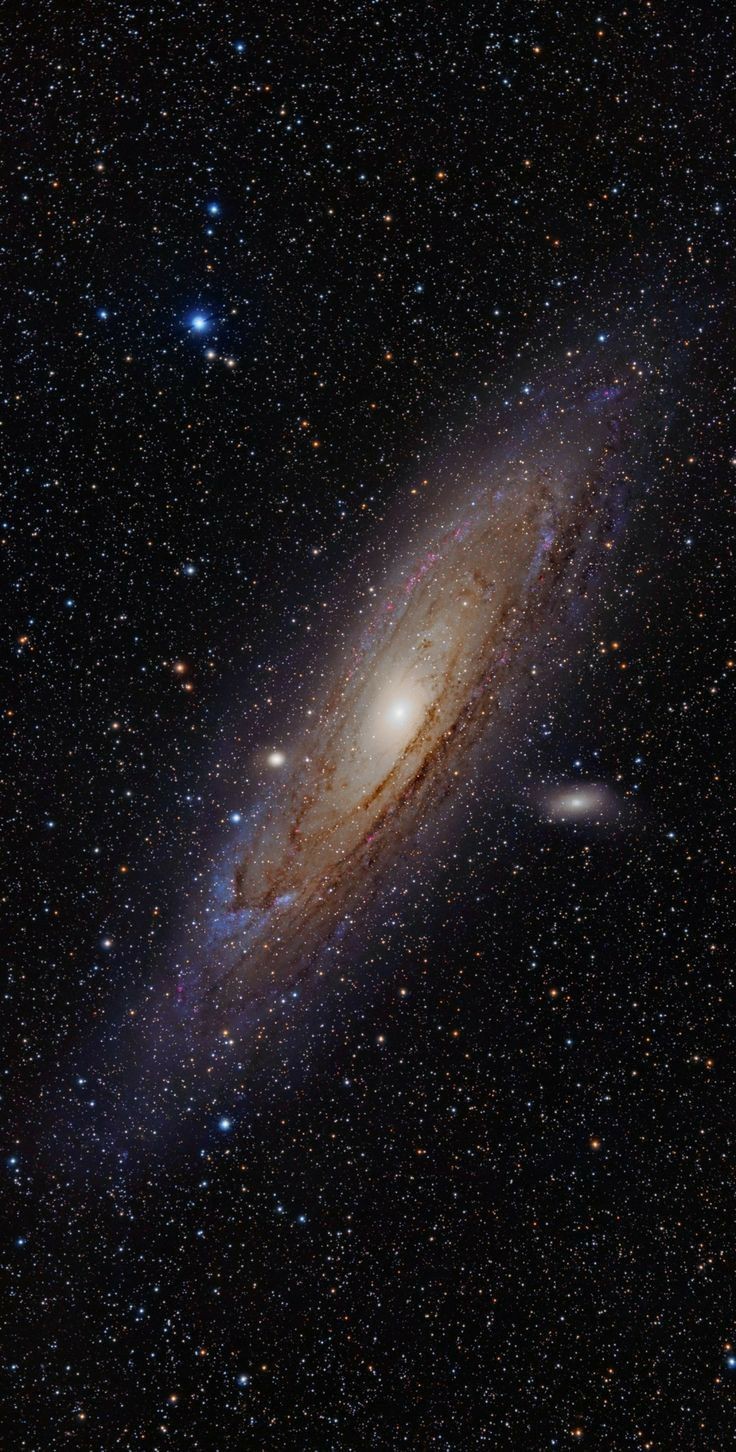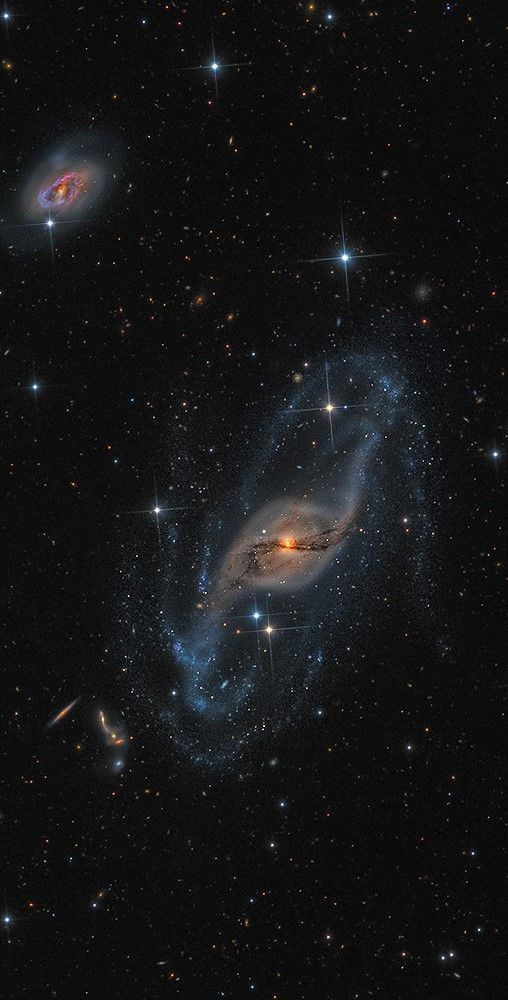NGC 6744

NGC 6744
via APOD/NASA; Credit: NASA, ESA, and the LEGUS team
More Posts from Ad-astra-affecte-spe and Others

Io's Close-Up by NASA's Marshall Space Flight Center



WR 134, Cygnus

Perseverance: Drifting clouds just before sunrise on Mars (March 18, 2023)

Cosmic Cliffs in Carina © JWST



M78 // Capturing Ancient Photons
A beautiful series of reflection nebulae make up M78. These reflection nebulae, like their name suggests, contain little ionized gas and primarily reflect the light of nearby stars. In this case, it is only two stars' light that the gas is reflecting despite containing a few hundred young stars within.


Brothers Betelgeuse and Rigel

A stellar exodus was caught in action! Astronomers used the Hubble Space Telescope to watch the white dwarf exodus in the globular star cluster 47 Tucanae, a dense swarm of hundreds of thousands of stars in our Milky Way galaxy. Hubble took snapshots of fledgling white dwarf stars beginning their slow-paced, 40-million-year migration from the crowded center of an ancient star cluster to the less populated suburbs. By observing ultraviolet light, astronomers examined 3,000 white dwarfs, tracing two populations with diverse ages and orbits. One grouping was 6 million years old and had just begun their journey. Another was around 100 million years old and had already arrived at its new homestead far from the center, roughly 1.5 light-years, or nearly 9 trillion miles (14 trillion kilometers), away. The cluster resides 14,500 light-years away in the southern constellation Tucana. Credit: NASA, ESA, and H. Richer and J. Heyl (University of British Columbia, Vancouver, Canada). ALT TEXT: Thousands of stars, seen as tiny dots, are shown on a black background. The stars vary in size and color, including orange, yellow, and white.
-
 androgynousballoonnightmare liked this · 4 months ago
androgynousballoonnightmare liked this · 4 months ago -
 charlotte-xxx liked this · 4 months ago
charlotte-xxx liked this · 4 months ago -
 non-existent-u liked this · 4 months ago
non-existent-u liked this · 4 months ago -
 saltythexfilesindianjonescop liked this · 5 months ago
saltythexfilesindianjonescop liked this · 5 months ago -
 gaultierbarbie liked this · 5 months ago
gaultierbarbie liked this · 5 months ago -
 perpetualspincycle reblogged this · 6 months ago
perpetualspincycle reblogged this · 6 months ago -
 thatfuckingaxolotl liked this · 6 months ago
thatfuckingaxolotl liked this · 6 months ago -
 wachsurfer2018 liked this · 6 months ago
wachsurfer2018 liked this · 6 months ago -
 cep777 liked this · 6 months ago
cep777 liked this · 6 months ago -
 not6goblinsinacoat liked this · 6 months ago
not6goblinsinacoat liked this · 6 months ago -
 anthony-erhartd liked this · 6 months ago
anthony-erhartd liked this · 6 months ago -
 wolfsong-the-bloody-beast reblogged this · 6 months ago
wolfsong-the-bloody-beast reblogged this · 6 months ago -
 dictionaryofmemories liked this · 6 months ago
dictionaryofmemories liked this · 6 months ago -
 sorinxsunny liked this · 6 months ago
sorinxsunny liked this · 6 months ago -
 atraedia liked this · 6 months ago
atraedia liked this · 6 months ago -
 jwcchttydfffanidk liked this · 6 months ago
jwcchttydfffanidk liked this · 6 months ago -
 captainroderunner liked this · 6 months ago
captainroderunner liked this · 6 months ago -
 thajazzyone2 reblogged this · 6 months ago
thajazzyone2 reblogged this · 6 months ago -
 bri125 liked this · 6 months ago
bri125 liked this · 6 months ago -
 kostassus liked this · 6 months ago
kostassus liked this · 6 months ago -
 ace-off-hearts liked this · 6 months ago
ace-off-hearts liked this · 6 months ago -
 stilesamine liked this · 6 months ago
stilesamine liked this · 6 months ago -
 bobifeet liked this · 6 months ago
bobifeet liked this · 6 months ago -
 thedarkarena liked this · 6 months ago
thedarkarena liked this · 6 months ago -
 the-space-princess reblogged this · 6 months ago
the-space-princess reblogged this · 6 months ago -
 jall-ems liked this · 6 months ago
jall-ems liked this · 6 months ago -
 navybluetriangles liked this · 6 months ago
navybluetriangles liked this · 6 months ago -
 extragalaxtic-cosmos reblogged this · 6 months ago
extragalaxtic-cosmos reblogged this · 6 months ago -
 lilly-kioko liked this · 6 months ago
lilly-kioko liked this · 6 months ago -
 alirina-and-her-cat liked this · 6 months ago
alirina-and-her-cat liked this · 6 months ago -
 nessieac liked this · 6 months ago
nessieac liked this · 6 months ago -
 krispyobservationdestiny liked this · 6 months ago
krispyobservationdestiny liked this · 6 months ago -
 cliriqstars reblogged this · 6 months ago
cliriqstars reblogged this · 6 months ago -
 iamfinemetoo liked this · 6 months ago
iamfinemetoo liked this · 6 months ago -
 exell24 liked this · 6 months ago
exell24 liked this · 6 months ago -
 wolfsong-the-bloody-beast liked this · 6 months ago
wolfsong-the-bloody-beast liked this · 6 months ago -
 zurgy-space reblogged this · 6 months ago
zurgy-space reblogged this · 6 months ago -
 zurgy liked this · 6 months ago
zurgy liked this · 6 months ago -
 silicon-katydid reblogged this · 6 months ago
silicon-katydid reblogged this · 6 months ago -
 princesscedar liked this · 6 months ago
princesscedar liked this · 6 months ago -
 silvereyedowl reblogged this · 6 months ago
silvereyedowl reblogged this · 6 months ago -
 silvereyedowl liked this · 6 months ago
silvereyedowl liked this · 6 months ago -
 mrkwonsworld-blog liked this · 6 months ago
mrkwonsworld-blog liked this · 6 months ago -
 ginwolf reblogged this · 6 months ago
ginwolf reblogged this · 6 months ago -
 ginwolf liked this · 6 months ago
ginwolf liked this · 6 months ago -
 deadmandet13 reblogged this · 6 months ago
deadmandet13 reblogged this · 6 months ago

★•Astronomy, Physics, and Aerospace•★ Original and Reblogged Content curated by a NASA Solar System Ambassador
204 posts



